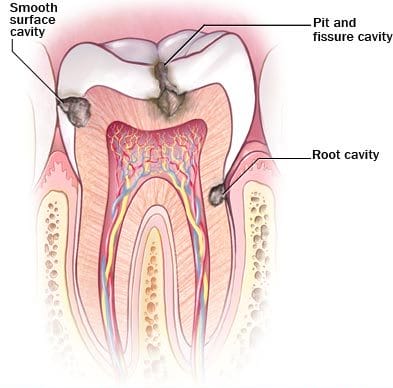It’s no surprise that many of us fear our visits to the dental office. According to the University of Washington’s Dental Fear Research Clinic, 8% of Americans have anxiety towards going to the dentist. Whether it’s a fear of dental tools, needles or the potential for pain, we’re fearful and tend of avoid the chance of hearing any bad news in the dental chair.
Cavities, in particular, are one of the most common diagnoses that can create stress for a patient. Fillings and crowns are recommended to take care of decay in the tooth, which are both simple procedures that can easily be pain free and extremely comfortable to experience. Cavities are treated with a filling or a crown, depending on the situation and the patient’s tooth conditions. We’ve taken the guesswork out of crowns and fillings so you can be informed the next time you visit our clinic!
Fillings: First Line of Defense
If cavities are a relatively new diagnosis for you, or if your cavity is quite small, a filling will typically be recommended. White fillings prevent the decay within the tooth from becoming more harmful and dangerous. This is a more affordable solution to cavities and can be a simple way to treat the condition with hardly any complications.
A white filling is made out of a composite mixture of glass and plastic particles to match the tone of your tooth effortlessly. After a quick application and bonding of the filling in only one visit, your tooth is protected from future decay.
Crowns: Crafting a Healthy Smile
At times, cavities can occur in a damaged or cracked tooth. In addition, cavities left without treatment will damage the tooth to a degree that white fillings will not support the health of the tooth. Crowns are shaped molds made to mimic the original tooth while shielding it from further damage. In just two visits, your tooth is reshaped to fit the crown and the crown itself is molded to be applied to your tooth. After this procedure, the tooth and the gum line are protected for 5 to 8 years.
Dr. Ritzau and her staff take great pride in ensuring that patients are treated well while preventing the chance of pain during any visit. In addition, our patients stay informed about their options and treatments when visiting, including the more complex and confusing aspects of dental health and care.

